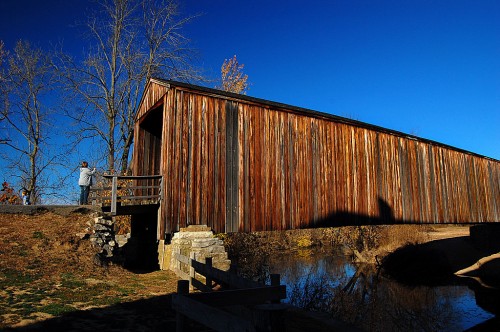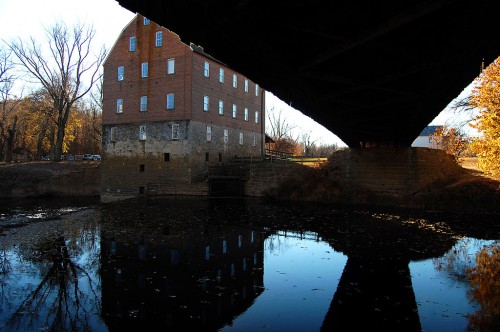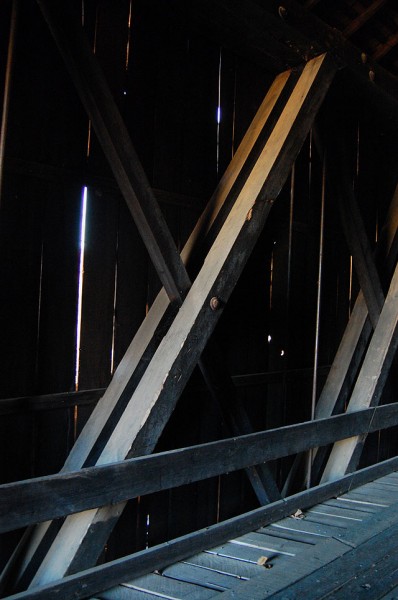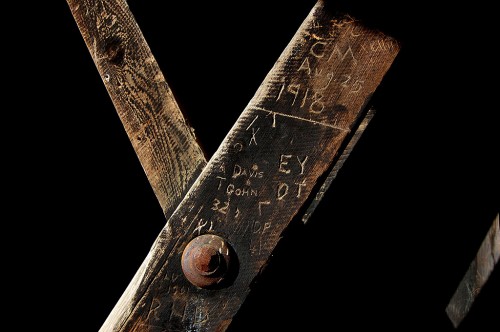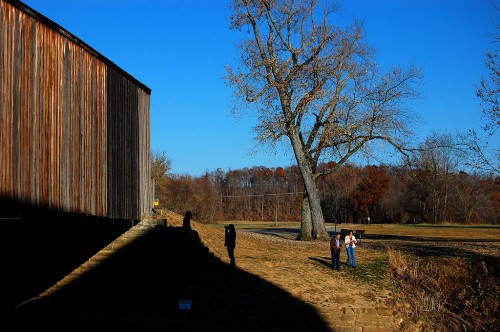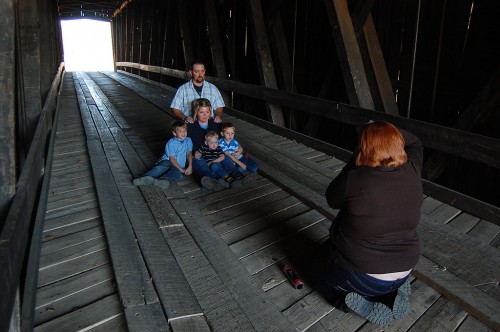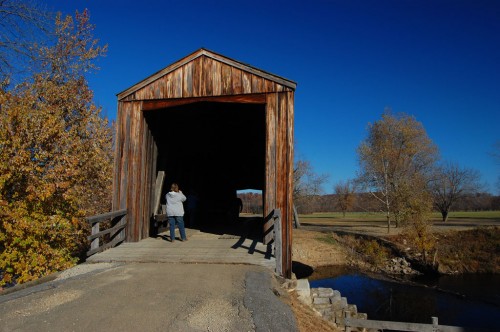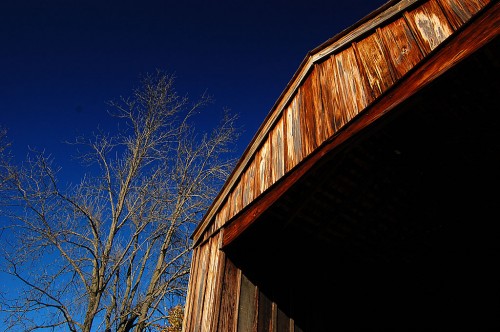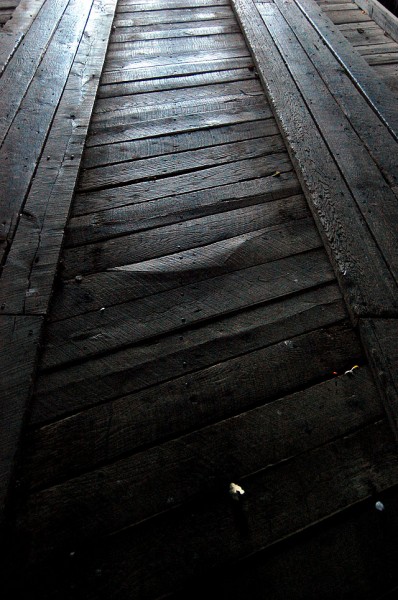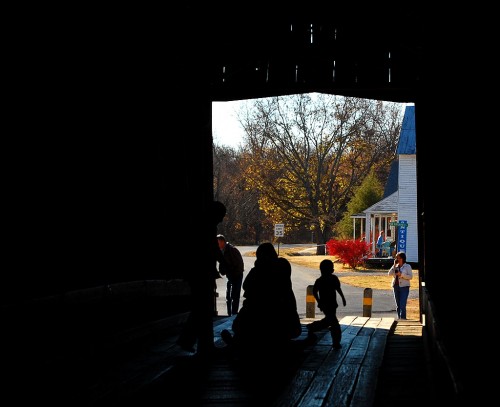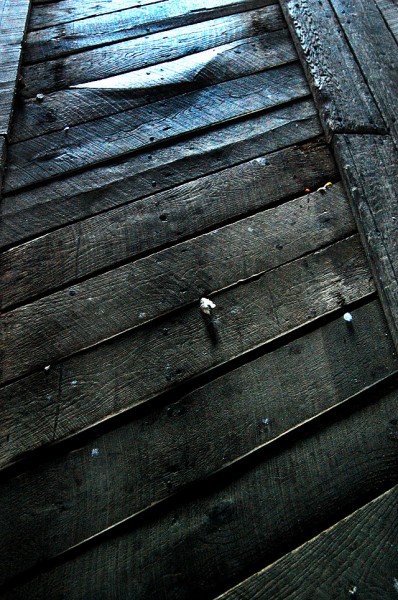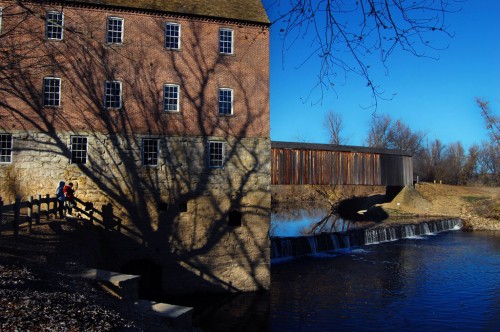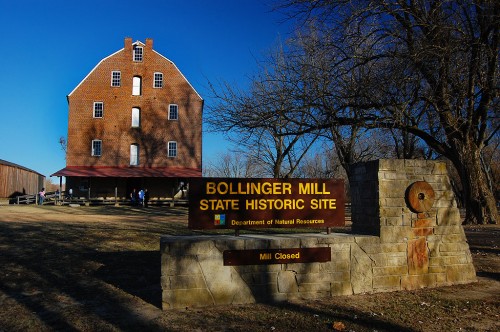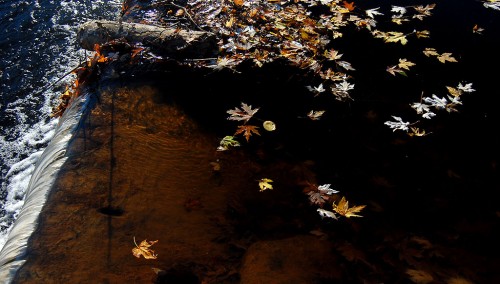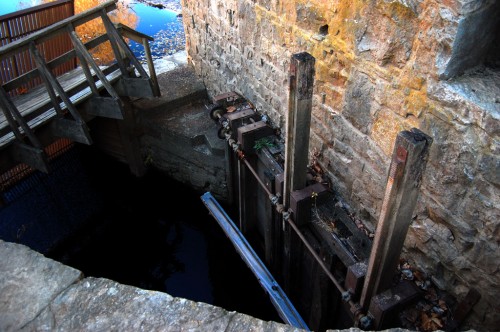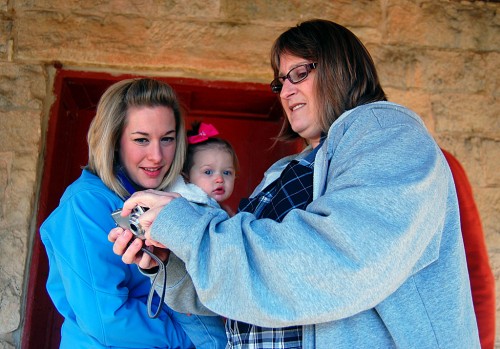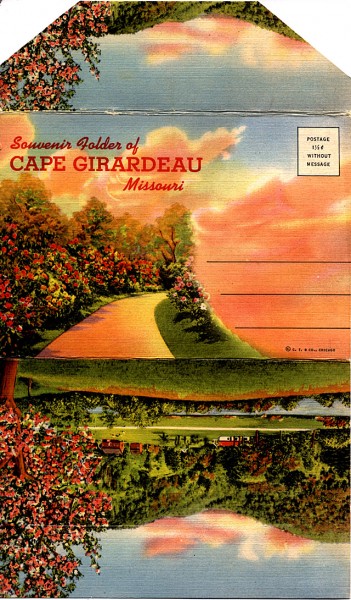 I’m always looking for Cape memorabilia. I think I picked this Souvenir of Cape Girardeau postcard packet at Annie Laurie’s Antiques on one of my recent visits. It could have been mailed for 1.5 cents (without message) when it was new. (Click on any image to make it larger)
I’m always looking for Cape memorabilia. I think I picked this Souvenir of Cape Girardeau postcard packet at Annie Laurie’s Antiques on one of my recent visits. It could have been mailed for 1.5 cents (without message) when it was new. (Click on any image to make it larger)
Sold at Strom’s News Agency
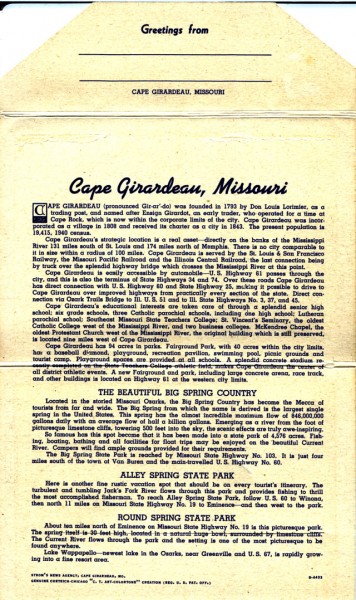 There’s a tiny note that says Strom’s News Agency, Cape Girardeau, Mo., on this sheet that has all kinds of factoids about Cape. I’m going to guess the information dates back to the late 20s or early 30s.
There’s a tiny note that says Strom’s News Agency, Cape Girardeau, Mo., on this sheet that has all kinds of factoids about Cape. I’m going to guess the information dates back to the late 20s or early 30s.
Bridge, bluffs and steam boats
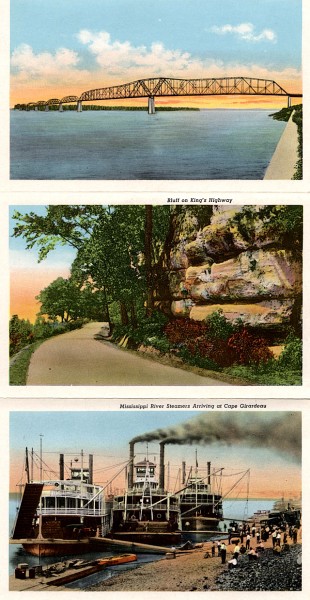 The Mississippi River Traffic Bridge opened to traffic Aug. 22,1928, so this had to have been published after that.
The Mississippi River Traffic Bridge opened to traffic Aug. 22,1928, so this had to have been published after that.
The rock bluffs have me guessing unless they are on the stretch on South Sprigg south and west of the cement plant. I can’t think of any other bluffs that are that close to the highway on The Kings Highway. I’m not even sure that South Sprigg carried that moniker.
Someone much more ancient that me will have to come up with the last time three steam boats docked on Cape’s riverfront.
Is that the KFVS tower?
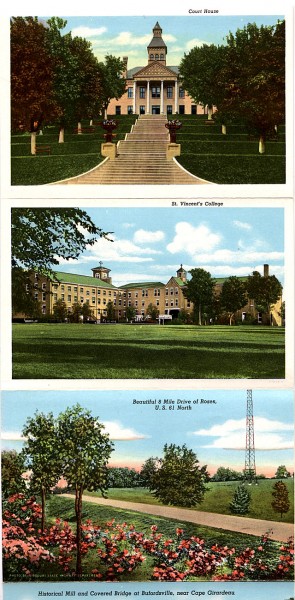 These postcards were hand-colored, so the artists had to make assumptions. Unless the facades changed, both the Common Pleas Courthouse and St. Vincent’s College were made of red brick.
These postcards were hand-colored, so the artists had to make assumptions. Unless the facades changed, both the Common Pleas Courthouse and St. Vincent’s College were made of red brick.
The only radio tower that I can think of between Cape and Jackson was the KFVS Radio tower that I photographed in 2009. The one on the postcard doesn’t look like it’s on the crest of the hill but the perspective might be off.
Burfordville, Arena Building and SEMO
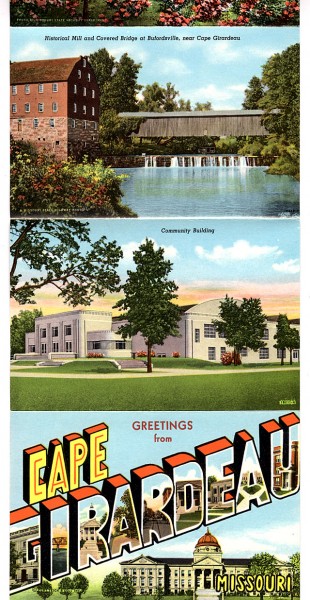 The Bollinger Mill and Covered Bridge at Burfordville looks pretty much like when I photographed them last year.
The Bollinger Mill and Covered Bridge at Burfordville looks pretty much like when I photographed them last year.
The Arena Building looks pretty much the same, too, but this was years before the Radio-Active Girl Scouts showed up there.
St. Vincent’s, Marquette and SE Hospital
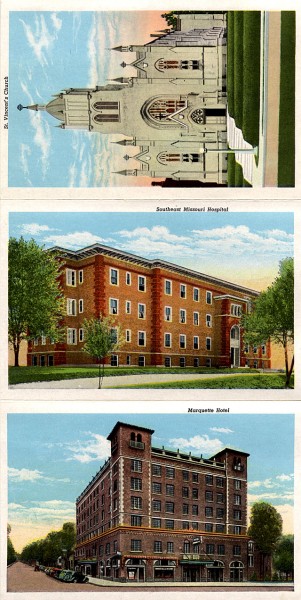 Southeast Hospital certainly has changed a lot since this was taken.
Southeast Hospital certainly has changed a lot since this was taken.
The Marquette Hotel looked pretty close to this in the 60s when it was in the background of a fender-bender I covered at Broadway and Fountain. The artist missed on the color of the facade, though.
St. Vincent de Paul Catholic Church has red brick in the real world, too.
St. Francis Hospital long gone
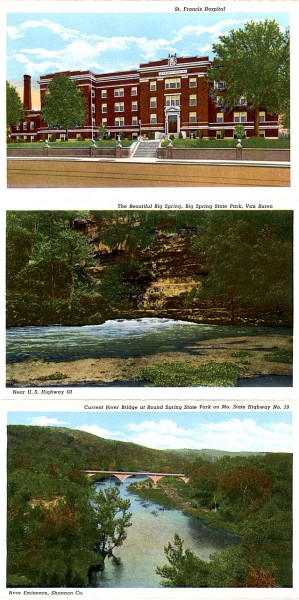 St. Francis Hospital was torn down in 2000.
St. Francis Hospital was torn down in 2000.
They must have run out of things to show in Cape, because the rest of the images are from around the Big Springs region.
Curt Teich & Co.
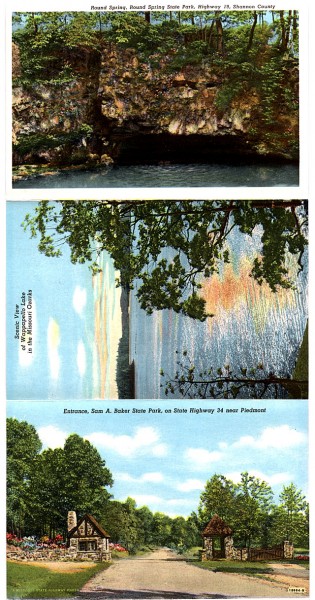 As a photographer, I’m pretty careful about appropriating photos that others have taken because I don’t like mine to get ripped off. In tiny, tiny print there was a note that the Souvenir Folder was © Curt Teich & Co. Figuring the copyright had probably expired – or the company probably had – I Googled the name.
As a photographer, I’m pretty careful about appropriating photos that others have taken because I don’t like mine to get ripped off. In tiny, tiny print there was a note that the Souvenir Folder was © Curt Teich & Co. Figuring the copyright had probably expired – or the company probably had – I Googled the name.
I had seen this style of card over the years, but I didn’t realize exactly how many the company had produced. There’s a whole collection of them that includes images of more than 10,000 cities and towns.

